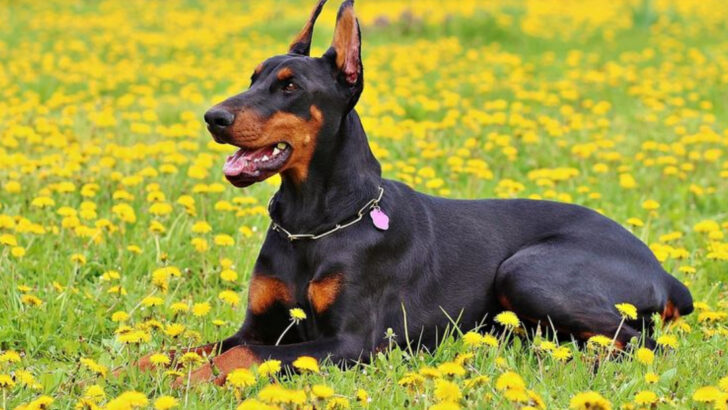They may share a name, but American and European Dobermans are practically cousins with secrets.
One thrives in show rings and living rooms.
The other trains for intensity, strength, and serious business.
Same breed on paper—two very different stories in the real world.
From their muscle-packed frames to their temperaments, these dogs split along a line drawn by purpose.
Some were bred for beauty, others for bite.
And trust us—once you know what to look for, you’ll never confuse the two again.
Whether you’re picking a pup or just obsessed with dog breeds, this deep dive into Doberman differences might change how you see them forever.
Let’s break down the key traits that separate the elegant American from the powerhouse European.
Body Structure
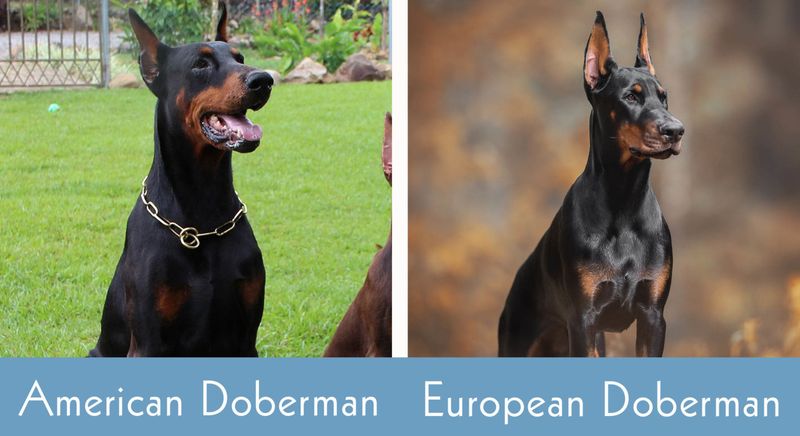
The American Doberman often captivates with its sleek and refined build. Its slender physique gives an air of elegance, perfect for those who appreciate fine lines. On the other hand, the European Doberman boasts a more robust structure, exuding power and strength. This muscular frame is ideal for demanding tasks and gives it a formidable presence.
The differences between these two arise from generations of selective breeding, tailored to function and aesthetic preferences. Whether you prefer the grace of the American or the commanding stature of the European, each has its unique appeal.
Temperament Variances

While the American Doberman is often seen as a sociable and friendly companion, the European counterpart tends to be more assertive and protective. This difference in temperament makes American Dobermans suitable for families and social settings, where a gentle demeanor is prized.
Conversely, European Dobermans are often preferred for roles requiring vigilance and security, given their innate protective instincts. These variances in temperament are significant for potential owners to consider, ensuring the dog’s nature aligns with their lifestyle and expectations.
Coat Appearance

The coat of a Doberman is a distinguishing feature, with the American variant flaunting a sleek and glossy appearance. This polished look adds to its sophisticated charm, making it a delight for those who enjoy grooming a show-quality dog.
In contrast, the European Doberman’s coat is dense and hard, designed for resilience against harsh environments. This practicality is favored by those who appreciate a dog built for endurance. Each type has its unique allure, catering to different aesthetic preferences.
Training Needs
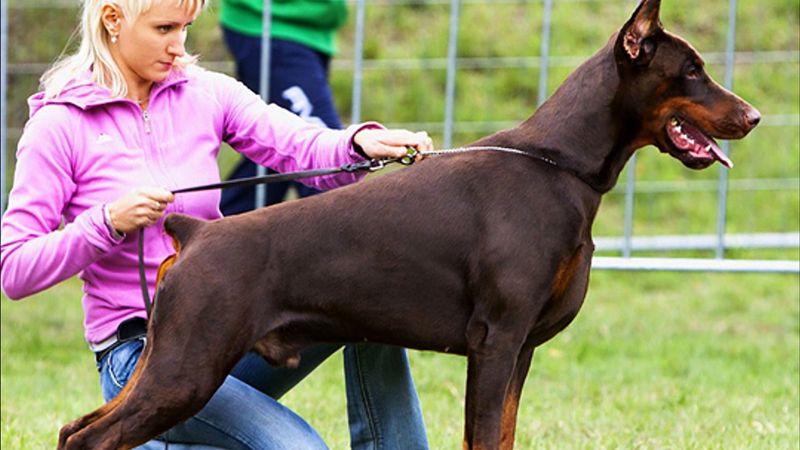
Training requirements can vary significantly between the two types. American Dobermans, known for their adaptability, excel in settings that require quick learning and social interactions, such as agility courses. Their eagerness to please makes them a joy to train in family-friendly environments.
European Dobermans, with their intense focus and work-oriented nature, thrive in protection or police work scenarios. Their training often leans towards discipline and precision, suiting more structured environments. Choosing the right training approach is essential to harness these dogs’ full potential.
Size Differences
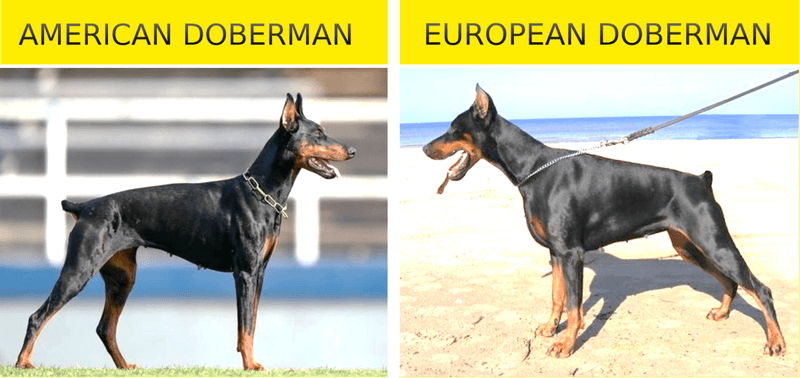
Size is another factor that sets these two Doberman types apart. Generally, European Dobermans are larger and heavier than their American counterparts. This size variation results from selective breeding for specific roles, with European Dobermans often bred for robust tasks that require strength and endurance.
American Dobermans, being more petite, are often preferred in environments where agility and speed are prioritized. Understanding these size differences can aid potential owners in selecting a dog that fits their living space and activity requirements.
Head Shape
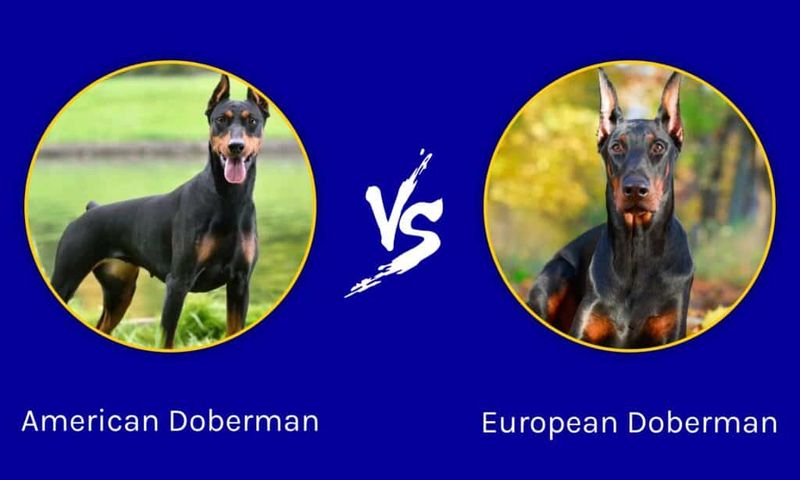
The head shape of Dobermans is a defining characteristic, with the American variety sporting a sleek, wedge-like appearance. This refined shape contributes to its elegant silhouette, appealing to those who admire a classic look.
In contrast, the European Doberman’s head is broader and more pronounced, exuding strength and determination. This distinction often correlates with the dog’s role, with European Dobermans traditionally serving in more demanding positions. Each head shape offers a glimpse into the breed’s history and purpose.
Ear Cropping and Tail Docking
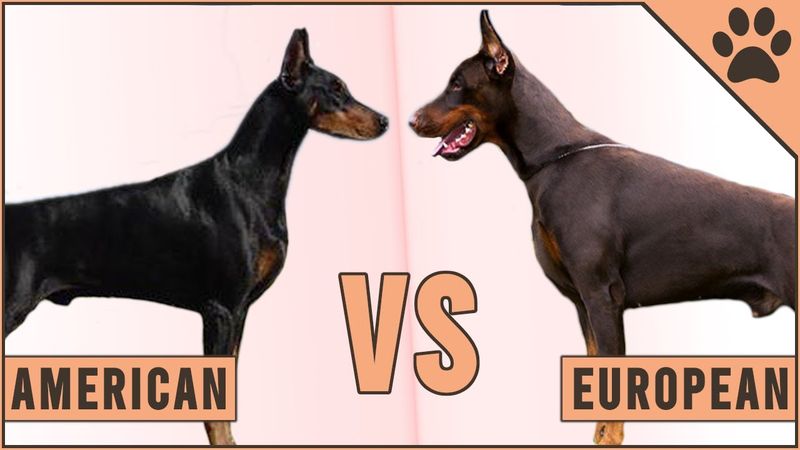
Ear cropping and tail docking practices differ between American and European Dobermans. In the United States, these practices are often performed for aesthetic reasons, aligning with the American Doberman’s show-ring appeal.
In Europe, regulations often restrict such procedures, leading to a natural appearance in many European Dobermans. This difference highlights cultural perspectives on canine aesthetics, impacting how each variety is perceived and presented in their respective regions.
Health Considerations
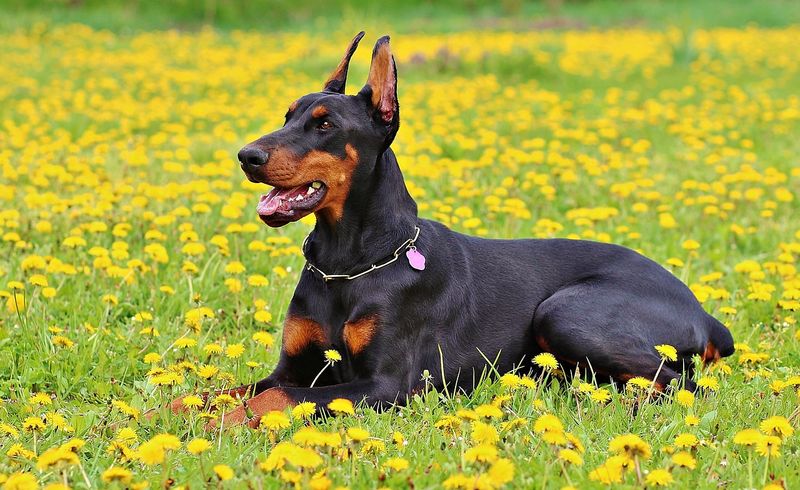
Health considerations are crucial when choosing between these two types. American Dobermans have been noted for certain hereditary conditions, such as dilated cardiomyopathy and hypothyroidism. Potential owners should be vigilant and proactive in managing these health challenges.
European Dobermans, while generally robust, can also face genetic issues, often exacerbated by their larger size. Regular health screenings and responsible breeding practices are essential to ensure a healthy lifespan for both varieties.
Lifespan Expectations
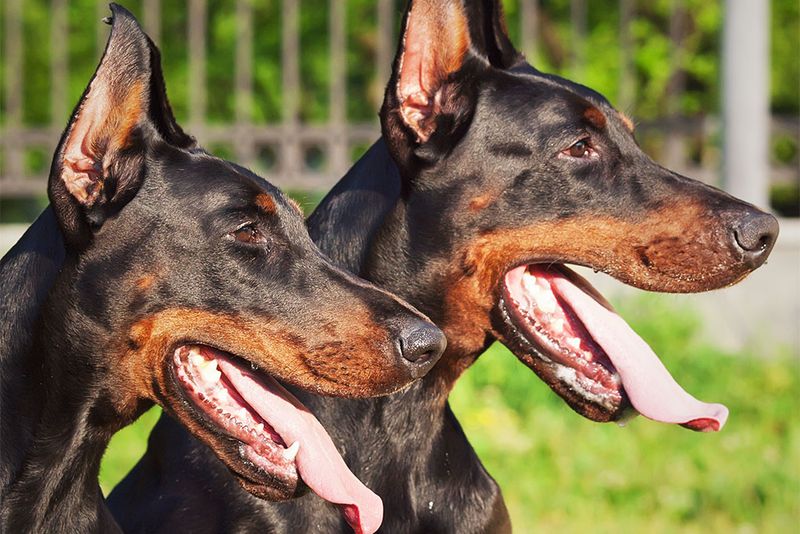
Lifespan expectations for Dobermans can vary slightly between the American and European types. American Dobermans often enjoy a longer lifespan, attributed to their lighter build and balanced activity levels. This longevity appeals to owners seeking a long-term canine companion.
However, the European Doberman, with its rigorous working background, may have a slightly shorter lifespan due to the demands placed on its body. Understanding these lifespan differences helps potential owners make informed decisions about the commitment required for each type.
Popularity in Various Regions
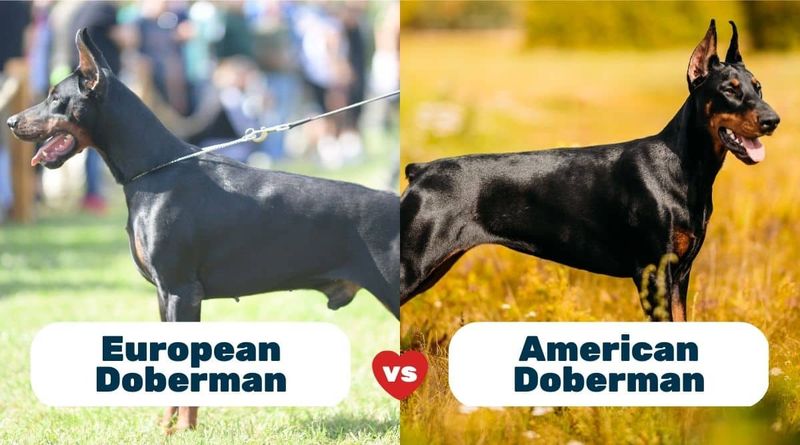
The popularity of American and European Dobermans varies geographically. In the United States, American Dobermans are often favored for their show-quality appearance and family-friendly nature, making them a popular choice among pet owners.
European Dobermans, with their working dog status, are more prevalent in regions that value their protective and service-oriented capabilities. This popularity divide reflects cultural preferences and practical needs, guiding potential owners based on their location and lifestyle.
Earset and Expression
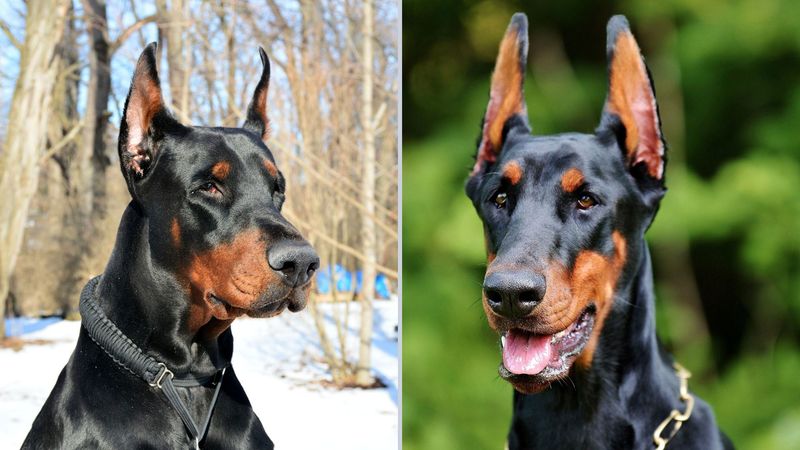
The earset and facial expression of Dobermans contributes to their distinct appearance. American Dobermans tend to have a higher earset, giving them an alert and attentive look. This expression is favored in show rings, highlighting their polished demeanor.
European Dobermans, in contrast, often exhibit a lower earset and a more intense gaze. This expression complements their assertive nature, making them well-suited for roles that require focus and determination. These differences in expression add to each type’s individual charm and functionality.
Dietary Needs
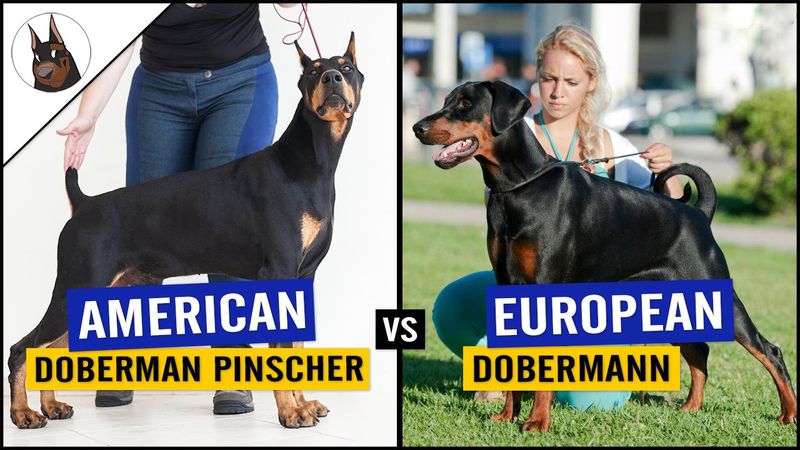
Dietary needs can differ between American and European Dobermans due to their distinct body types and activity levels. American Dobermans, with their more moderate energy demands, often require a balanced diet that maintains their sleek physique without excessive calorie intake.
Conversely, European Dobermans, known for their robust build and higher activity levels, may benefit from a protein-rich diet to support their muscle mass and energy needs. Tailoring the diet to match each type’s specific nutritional requirements is vital for their overall health and well-being.
History and Origination

The history of American and European Dobermans is as varied as their characteristics. The American Doberman originated from dogs brought to the United States in the early 20th century, where breeders refined them for elegance and companionship.
European Dobermans, however, have roots deeply embedded in working history, originating from Germany where they were bred for protection and service tasks. This divergence in history reflects their distinct purposes and roles, offering insights into their development and specialization over the years.
Eye Color and Shape

The eyes of Dobermans are a window to their soul, each type telling its own story. American Dobermans often have lighter eye colors, complementing their softer facial expressions. These eyes convey a sense of warmth and friendliness, appealing to those seeking a gentle companion.
European Dobermans, by contrast, feature darker, more intense eyes, reflecting their vigilant nature. This eye color and shape are indicative of their role as protectors, exuding confidence and alertness. Understanding these nuances in eye characteristics offers another layer of depth to these distinguished breeds.

